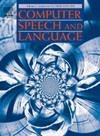完善语音合成评估:2023 年暴风雪挑战赛总结
IF 3.4
3区 计算机科学
Q2 COMPUTER SCIENCE, ARTIFICIAL INTELLIGENCE
引用次数: 0
摘要
自 2005 年以来,"暴风雪挑战赛 "一直在为文本到语音(TTS)领域的进展设定基准。该挑战赛见证了一个个重要的里程碑,其结果表明,到 2021 年,合成语音在可懂度方面与自然语音无异,到同年,合成语音在自然度方面甚至可能与自然语音无异。因此,最新 TTS 系统生成的高质量合成语音暴露了 ITU-T P.800.1 平均意见分(MOS)在检测合成语音与自然语音之间的其余差异方面的局限性。然而,它是前几届挑战赛中使用的唯一方法,目前仍是语音合成评估领域最流行的方法。在 2023 年挑战赛中,我们通过采用最先进的语音合成评估技术来完善对语音质量、说话人相似度和可懂度的评估,从而解决了以往挑战赛中观察到的局限性。在语音质量方面,通过对获得最佳 MOS 的系统进行相对比较,我们发现了系统之间更多的显著差异。在说话者相似度方面,我们证明了听者是否熟悉目标声音会产生很大的偏差。至于可懂度,与合成语篇的全局转录任务相比,对特定语言现象(如同音字的发音)的评估更能突出系统的局限性。除了报告 2023 年挑战赛 18 个参赛项目的结果外,我们还将结果分析扩展到 TTS 模块的类型,以提供有关模型设计最新进展的一些见解。总之,今年的结果表明,有必要向改进 TTS 评估的新方法转变,以揭示合成语音与自然语音之间越来越小的局部差异。本文章由计算机程序翻译,如有差异,请以英文原文为准。
Refining the evaluation of speech synthesis: A summary of the Blizzard Challenge 2023
The Blizzard Challenge has benchmarked progress in Text-to-Speech (TTS) since 2005. The Challenge has seen important milestones passed, with results suggesting that synthetic speech was indistinguishable from natural speech in terms of intelligibility in 2021 and that by that same year it was perhaps even indistinguishable in naturalness. The high quality of synthetic speech generated by the latest TTS systems has thus revealed limitations with ITU-T P.800.1 Mean Opinion Score (MOS) in detecting the remaining differences between synthetic and natural speech. Yet, it was the only method used in previous Challenges and is still the most popular method in the field for speech synthesis evaluation. In the 2023 Challenge, we addressed observed limitations of past Challenges by incorporating state-of-the-art speech synthesis evaluation techniques to refine the evaluation of speech quality, speaker similarity and intelligibility. For speech quality, a relative comparison of the systems receiving the best MOS was able to discover a greater number of significant differences between systems. Regarding speaker similarity, we demonstrated that there is a strong bias depending on whether the listeners are familiar with the target voice or not. As for intelligibility, the evaluation of language-specific phenomena, such as the pronunciation of homographs, better highlighted system limits compared to global transcription tasks of synthesised utterances. In addition to reporting results for the 18 entries to the 2023 Challenge, we extend the results analysis to type of TTS module to provide some insights on the most recent advances in model design. Overall, this year’s results demonstrate the need for a shift towards new methods for refining TTS evaluation to shed light on increasingly smaller and localised differences between synthesised and natural speech.
求助全文
通过发布文献求助,成功后即可免费获取论文全文。
去求助
来源期刊

Computer Speech and Language
工程技术-计算机:人工智能
CiteScore
11.30
自引率
4.70%
发文量
80
审稿时长
22.9 weeks
期刊介绍:
Computer Speech & Language publishes reports of original research related to the recognition, understanding, production, coding and mining of speech and language.
The speech and language sciences have a long history, but it is only relatively recently that large-scale implementation of and experimentation with complex models of speech and language processing has become feasible. Such research is often carried out somewhat separately by practitioners of artificial intelligence, computer science, electronic engineering, information retrieval, linguistics, phonetics, or psychology.
 求助内容:
求助内容: 应助结果提醒方式:
应助结果提醒方式:


